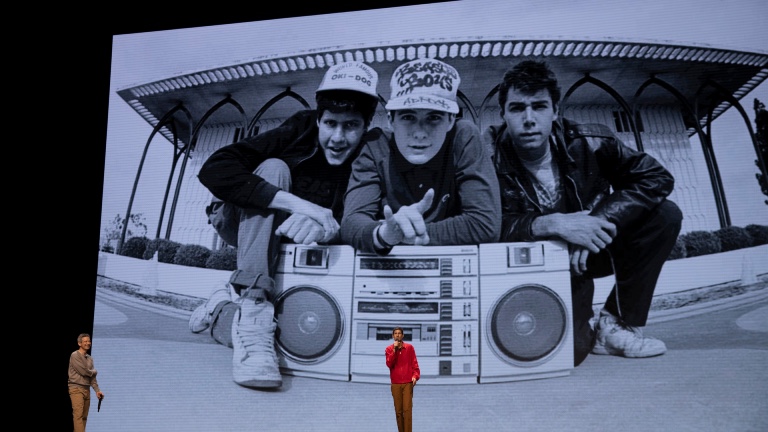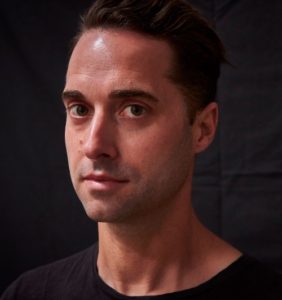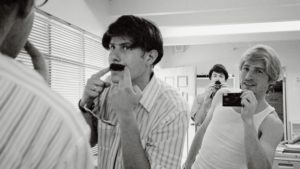 The original experimental punk, hip hop, rap rock, alternative band of best friends Adam “MCA” Yauch, Michael “Mike D” Diamond, and Adam “Ad-Rock” Horovitz, better known as the Beastie Boys, left a mark with their distinctly unique, adaptive musical style for over 30 years. They’ve chronicled their story in a live documentary, produced, directed, and written by Spike Jonze titled Beastie Boys Story, now available on Apple TV+. The story was told live on stage for audiences across the country, moderated by surviving group members, Diamond (vocalist, drummer) and Horovitz (vocalist, guitarist, programmer). Over the course of two hours, they detailed their deep friendship, the beginnings of the band, their musical journey, variation of musical styles, ups and downs of the music business, sharing stories, and the passing of their dear friend Adam Yauch (vocalist, bass player, filmmaker). Supervising Sound Editor and Re-recording Mixer Martyn Zub and his sound team were tasked with editing and mixing over 80 tracks of live stage audio.
The original experimental punk, hip hop, rap rock, alternative band of best friends Adam “MCA” Yauch, Michael “Mike D” Diamond, and Adam “Ad-Rock” Horovitz, better known as the Beastie Boys, left a mark with their distinctly unique, adaptive musical style for over 30 years. They’ve chronicled their story in a live documentary, produced, directed, and written by Spike Jonze titled Beastie Boys Story, now available on Apple TV+. The story was told live on stage for audiences across the country, moderated by surviving group members, Diamond (vocalist, drummer) and Horovitz (vocalist, guitarist, programmer). Over the course of two hours, they detailed their deep friendship, the beginnings of the band, their musical journey, variation of musical styles, ups and downs of the music business, sharing stories, and the passing of their dear friend Adam Yauch (vocalist, bass player, filmmaker). Supervising Sound Editor and Re-recording Mixer Martyn Zub and his sound team were tasked with editing and mixing over 80 tracks of live stage audio.

The sound of the live documentary implemented a certain feeling of intimacy. “Spike was leaning on the side of being intimate, especially in the third act when they were talking about the passing of MCA, with everyone being so close with the band for nearly 30 years. The process once we found the stylistic voice of the actual film, it was a matter of just adding all the layers on top of that,” Zub expressed.
The sound was mixed over 4 separate nights and 80 microphones. The re-recording mixer explained, “There were four different venues over North America that they shot at. It was like a mud map in the auditorium that had microphones in the front row, left and right, and then staggered throughout the room. Obviously, Adam and Mike had lapels, hand-held microphones, and stage microphones as well. The live crew captured all of it and controlled the feedback. We had the task of going through using mics at certain times and play them up. It added a great vibe when there was a crowd reaction and bring in a mic that had that separation space as we were in that environment.”
Of the numerous albums, the most emphasized and mentioned albums within the live stage presentation included Licensed to Ill, Paul’s Boutique, and Hello Nasty. The live documentary featured several hit songs such as “Sabotage”, “Cooky Puss”, “Hold It Now, Hit It”, “The New Style”, “Paul Revere”, “Brass Monkey”, “Fight For Your Right”, “Shadrach”, “Jimmy James”, “Something’s Got To Give”, “Pass The Mic”, “Sure Shot”, and many others.

The supervising sound editor added, “The music that was played on the night, we would play a bit of the natural reverb against one of the original tracks making it feel live, real, and energetic as it is in our environment. We tried to make it as dynamically interesting, without being too overtly over-the-top that it’s a rock ‘n’ roll concert, it’s more of an intimate story.”
The final mix was a fine balance of all the talking from all the venues, crowd, and music. “I offset some marks to make it have a natural delay and then added reverb in places. Then trust the ear to what sounds good and remembering what Spike actually liked. The biggest challenge was their personal taste of how they think it should sound. We’ve probably spent two weeks in total and then did it in 7.1 mix. We delivered to Apple home Atmos version,” the re-recording mixer stated.
Sounds were definitely experimented with during the sound editing process, Zub said. “We did experiment with sounds. We wanted to give it more of a true live performance as it was done on the night without too much of those Hollywood type of effects. Ultimately, we wanted to keep it as natural as possible.”
“I loved the final act of the documentary. I loved MCA, who passed away in the Beastie Boys. I’ve seen him live multiple times all over the world. Every time I see that section go by in the film; I can’t help that my eyes fill up with water for them because it is a pretty emotional moment. For a group of guys, I loved their music since I was a teenager. We did such a beautiful job in making it really intimate, emotional, and impactful for the audience.”
Martyn Zub has previously been nominated for awards from the Australian Academy of Cinema and Television Arts (AACTA) Awards, Cinema Audio Society (CAS), Hollywood Post Alliance, and the Motion Picture Sound Editors (MPSE). Beastie Boys Story is nominated for a Primetime Emmy in the categories of Outstanding Sound Editing and Sound Mixing for a Nonfiction or Reality Program (Single or Multi-Camera).
Primetime Emmy Nominations:
Outstanding Sound Editing for a Nonfiction or Reality Program (Single or Multi-Camera):
Martyn Zub, Supervising Sound Editor
Paul Aulicino, Sound Effects Editor
Pernell L. Salinas, Sound Editor
Outstanding Sound Mixing for a Nonfiction or Reality Program (Single or Multi-Camera):
Martyn Zub, Re-Recording Mixer
William Tzouris, Production Mixer
Jacob Feinberg, Production Mixer




